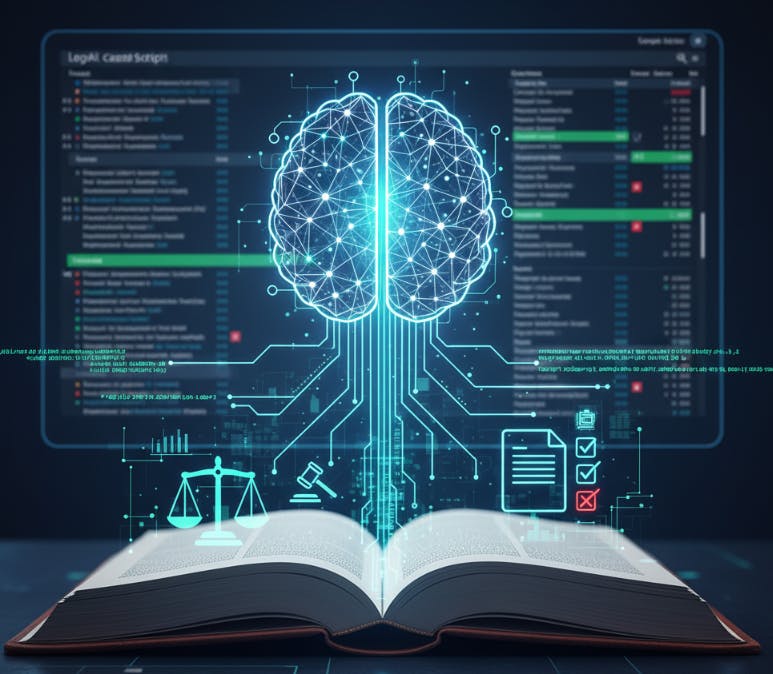If you’ve ever dealt with public-sector data, you know the pain. It’s often locked away in the most user-unfriendly format imaginable: the PDF.
I recently found myself facing a mountain of these. Specifically, hundreds of special education due process hearing decisions from the Texas Education Agency. Each document was a dense, multi-page legal decision. My goal was simple: figure out who won each case—the “Petitioner” (usually the parent) or the “Respondent” (the school district).
Reading them all manually would have taken weeks. The data was there, but it was unstructured, inconsistent, and buried in legalese. I knew I could automate this. What started as a simple script evolved into a full-fledged data engineering and NLP pipeline that can process a decade’s worth of legal decisions in minutes.
Here’s how I did it.
The Game Plan: An ETL Pipeline for Legal Text
ETL (Extract, Transform, Load) is usually for databases, but the concept fits perfectly here:
- Extract: Build a web scraper to systematically download every PDF decision from the government website and rip the raw text out of it.
- Transform: This is the magic. Build an NLP engine that can read the unstructured text, understand the context, and classify the outcome of the case.
- Load: Save the results into a clean, structured CSV file for easy analysis.
Step 1: The Extraction – Conquering the PDF Mountain
First, I needed the data. The TEA website hosts decisions on yearly pages, so the first script, texasdueprocess_extract.py, had to be a resilient scraper. I used a classic Python scraping stack:
- requests and BeautifulSoup4 to parse the HTML of the index pages and find all the links to the PDF files.
- PyPDF2 to handle the PDFs themselves.
A key insight came early: the most important parts of these documents are always at the end—the “Conclusions of Law” and the “Orders.” Scraping the full 50-page text for every document would be slow and introduce a lot of noise. So, I optimized the scraper to only extract text from the last two pages.
texasdueprocess_extract.py – Snippet
# A look inside the PDF extraction logic
import requests
import PyPDF2
import io
def extract_text_from_pdf(url):
try:
response = requests.get(url)
pdf_file = io.BytesIO(response.content)
pdf_reader = PyPDF2.PdfReader(pdf_file)
text = ""
# Only process the last two pages to get the juicy details
for page_num in range(len(pdf_reader.pages))[-2:]:
page = pdf_reader.pages[page_num]
text += page.extract_text()
return text
except Exception as e:
print(f"Error processing {url}: {e}")
return None
This simple optimization made the extraction process much faster and more focused. The script iterated through years of decisions, saving the extracted text into a clean JSON file, ready for analysis.
Step 2: The Transformation – Building a Legal “Brain”
This was the most challenging and interesting part. How do you teach a script to read and understand legal arguments?
My first attempt (examineeddata.py) was naive. I used NLTK to perform n-gram frequency analysis, hoping to find common phrases. It was interesting but ultimately useless. “Hearing officer” was a common phrase, but it told me nothing about who won.
I needed rules. I needed a domain-specific classifier. This led to the final script, examineeddata_2.py, which is built on a few key principles.
A. Isolate the Signal with Regex
Just like in the scraper, I knew the “Conclusions of Law” and “Orders” sections were the most important. I used a robust regular expression to isolate these specific sections from the full text.
examineeddata_2.py – Regex for Sectional Analysis
# This regex looks for "conclusion(s) of law" and captures everything
# until it sees "order(s)", "relief", or another section heading.
conclusions_match = re.search(
r"(?:conclusion(?:s)?s+ofs+law)(.+?)(?:order(?:s)?|relief|remedies|viii?|ix|bbased uponb)",
text, re.DOTALL | re.IGNORECASE | re.VERBOSE)
# This one captures everything from "order(s)" or "relief" to the end of the doc.
orders_match = re.search(
r"(?:order(?:s)?|relief|remedies)(.+)$",
text, re.DOTALL | re.IGNORECASE | re.VERBOSE
)
conclusions = conclusions_match.group(1).strip() if conclusions_match else ""
orders = orders_match.group(1).strip() if orders_match else ""
This allowed me to analyze the most decisive parts of the text separately and even apply different weights to them later.
B. Curated Keywords and Stemming
Next, I created two lists of keywords and phrases that strongly indicated a win for either the Petitioner or the Respondent. This required some domain knowledge.
- Petitioner Wins: “relief requested…granted”, “respondent failed”, “order to reimburse”
- Respondent Wins: “petitioner failed”, “relief…denied”, “dismissed with prejudice”
But just matching strings isn’t enough. Legal documents use variations of words (“grant”, “granted”, “granting”). To solve this, I used NLTK’s PorterStemmer to reduce every word in both my keyword lists and the document text to its root form.
from nltk.stem import PorterStemmer
stemmer = PorterStemmer()
# Now "granted" becomes "grant", "failed" becomes "fail", etc.
stemmed_keyword = stemmer.stem("granted")
This made the matching process far more effective.
C. The Secret Sauce: Negation Handling
This was the biggest “gotcha.” Finding the keyword “fail” is great, but the phrase “did not fail to comply” completely flips the meaning. A simple keyword search would get this wrong every time.
I built a negation-aware regex that specifically looks for words like “not,” “no,” or “failed to” appearing before a keyword.
examineeddata_2.py – Negation Logic
For each keyword, build a negation-aware regex
keyword = "complied"
negated_keyword = r"b(?:not|no|fail(?:ed)?s+to)s+" + re.escape(keyword) + r"b"
First, check if the keyword exists
if re.search(rf"b{keyword}b", text_section):
# THEN, check if it's negated
if re.search(negated_keyword, text_section):
# This is actually a point for the OTHER side!
petitioner_score += medium_weight
else:
# It's a normal, positive match
respondent_score += medium_weight
This small piece of logic dramatically increased the accuracy of the classifier.
Step 2: The Transformation – Building a Legal “Brain”
Finally, I put it all together in a scoring system. I assigned different weights to keywords and gave matches found in the “Orders” section a 1.5x multiplier, since an order is a definitive action.
The script loops through every case file, runs the analysis, and determines a winner: “Petitioner,” “Respondent,” “Mixed” (if both scored points), or “Unknown.” The output is a simple, clean `decision_analysis.csv` file.
| docket | winner | petitioner_score | respondent_score |
| :--- | :--- | :--- | :--- |
| 001-SE-1023 | Respondent | 1.0 | 7.5 |
| 002-SE-1023 | Petitioner | 9.0 | 2.0 |
| 003-SE-1023 | Mixed | 3.5 | 4.0 |
A quick `df['winner'].value_counts()` in Pandas gives me the instant summary I was looking for.
Final Thoughts
This project was a powerful reminder that you don’t always need a massive, multi-billion-parameter AI model to solve complex NLP problems. For domain-specific tasks, a well-crafted, rule-based system with clever heuristics can be incredibly effective and efficient. By breaking down the problem—isolating text, handling word variations, and understanding negation, I was able to turn a mountain of messy PDFs into a clean, actionable dataset. n










